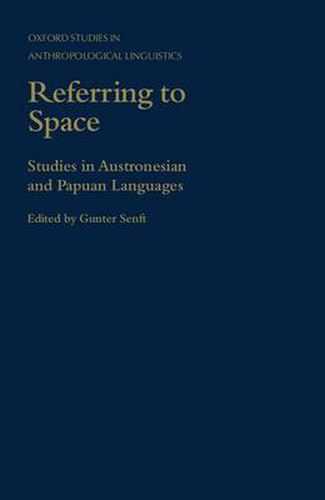Readings Newsletter
Become a Readings Member to make your shopping experience even easier.
Sign in or sign up for free!
You’re not far away from qualifying for FREE standard shipping within Australia
You’ve qualified for FREE standard shipping within Australia
The cart is loading…






The first aim of this anthology is to illustrate the variety of resources that Austronesian and Papuan languages offer their speakers for referring to space. The languages here described are spread from Madagascar to Tonga, and there are many differences between them. They also offer a striking contrast to Indo-European languages, and call into question universalistic claims about human spatial concepts and spatial reference based solely on evidence from Indo-European languages and their speakers.\n \n There are, however, striking parallels between the kinds of systems that languages offer and that their speakers employ when referring to space. Understanding the differences in the ways that coordinate systems are used requires not only linguistic, but also cultural, historical, and geographical knowledge. Thus the second aim of the collection is to illustrate the necessity of an interdisciplinary approach to the topic of space if we are to understand the underlying logic of conceptions of space manifest in verbal expressions.\n \n The first three papers offer overviews of the conception of space in Austronesian languages and analyse the coordinate systems employed for spatial reference. The seven papers which follow offer anthropological linguistic descriptions of directionals and locatives in Austronesian and Papuan languages, and the last three contributions offer a more structurally-oriented perspective.
$9.00 standard shipping within Australia
FREE standard shipping within Australia for orders over $100.00
Express & International shipping calculated at checkout
The first aim of this anthology is to illustrate the variety of resources that Austronesian and Papuan languages offer their speakers for referring to space. The languages here described are spread from Madagascar to Tonga, and there are many differences between them. They also offer a striking contrast to Indo-European languages, and call into question universalistic claims about human spatial concepts and spatial reference based solely on evidence from Indo-European languages and their speakers.\n \n There are, however, striking parallels between the kinds of systems that languages offer and that their speakers employ when referring to space. Understanding the differences in the ways that coordinate systems are used requires not only linguistic, but also cultural, historical, and geographical knowledge. Thus the second aim of the collection is to illustrate the necessity of an interdisciplinary approach to the topic of space if we are to understand the underlying logic of conceptions of space manifest in verbal expressions.\n \n The first three papers offer overviews of the conception of space in Austronesian languages and analyse the coordinate systems employed for spatial reference. The seven papers which follow offer anthropological linguistic descriptions of directionals and locatives in Austronesian and Papuan languages, and the last three contributions offer a more structurally-oriented perspective.